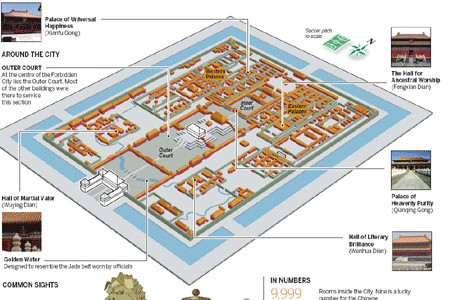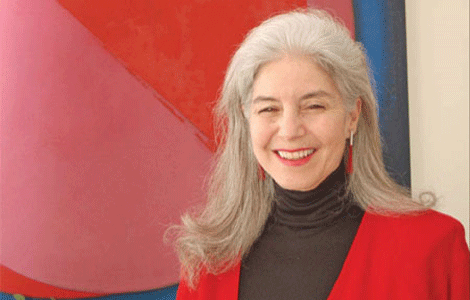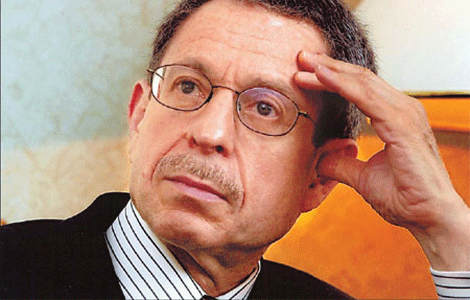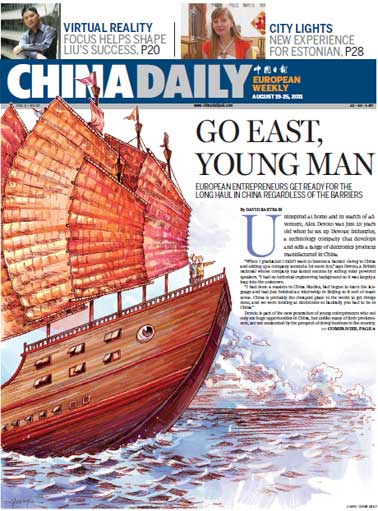Photos
Ordinary Miracle
Updated: 2011-09-04 07:55
By Rebecca Lo (China Daily)
|
The artist posing behind a self-portrait he did in 2004. [Rebecca Lo / For China Daily] |
Yeung Tong-lung paints everyday scenarios that are infused with extraordinary detail and universal memories. For him, his oils are a record of home, heart and Hong Kong. Rebecca Lo visits his studio.
|
MTR, oil on canvas by Yeung Tong-lung. [Pauline D Loh / China Daily] |
It is a sunny August afternoon in Hong Kong's Kennedy Town, and I am lost. Despite being less than a mile from home, I have never been to this part of the neighborhood. I had Yeung Tong-lung's address scribbled on a scrap of paper: 1J Sands Street. But pacing between Catchick and Belcher's Streets only got me as far as 1C.
Luckily, I was rescued by Debra Little, who navigated me into Yeung's studio on the first floor of a traditional walk-up tenement. Large windows on opposite sides of a generous room flooded the space with natural light while casting a warm glow upon the many canvases propped up against the walls.
Little and business partner Emily Young are launching DeeM, a Hong Kong contemporary art gallery, with the first exhibition of Yeung's work in more than 10 years. "Debra asked me to exhibit," Yeung confesses. "I may not have shown for another 10 years otherwise."
"Yes, it's my fault," laughs Little, a Hong Kong-based Australian interior designer who is an ardent fan of Yeung's paintings. "Actually, Emily and I bonded over one of Tong-lung's paintings. She was seeking an interior designer at the time and she loved the one I had hanging in my home. Now we are opening a gallery together."
"I was told that Sands Street used to be a river, and most of the northern flat part that you see today is reclaimed - that's why Number 1 Sands Street goes on for two blocks," Yeung explains.
He has been using the flat as his studio for the past decade, and has a disciplined work schedule. Arriving every morning by 9:30 am, he stays until 7 pm and only takes Sundays off. His wife, Janice Sze, is also an artist, although she devotes most of her time now to the care of their 15-year-old daughter.
"It's like going to the office," says Yeung. "Even if I am not inspired to paint, I'll sketch or do some prep work. There is a lot to do around here."
Yeung only paints from memory. He produces a series of sketches that focus on a small fragment of a painting, working out the composition and details until he is satisfied. Then he begins on canvas. Each painting takes anywhere from three to four months, and he usually works on one painting at a time. "If I'm unhappy with it, I may leave it for a while to see if, over time, it can be improved."
Originally from Fujian province, he moved to Hong Kong in 1973 as a teenager. In addition to painting fulltime, he has previously worked as a mural painter, in photography and in film. He is considered one of the city's best oil painters, with pieces hanging in the Hong Kong Museum of Art and the Hong Kong Economic and Trade Office in Geneva.
"Oil is a very traditional medium that many people think is dead," he says. "But I like working with it and want to revive it. There are many different pleasures that it gives me. It's all about working with the hands."
His subjects are the people that he sees everyday. Girls on the tram, the elderly waiting patiently for a doctor's appointment or a Chinese wedding - slices of city life that have been carefully filtered through his memory. They are full of details and emotion, often layered to evoke a not-so-distant past that speaks universal truths with haunting colors and distorted perspectives.
"That's one of the things I love about Tong-lung's painting," says Little. "Every time I look at it, I see something different."
"I want life and art to merge," Yeung says. "I want to capture what is right in front of me. I'll observe over a long period of time and keep the image in my mind. The gestation period can take years."
His painting simply called MTR began as a series of vignettes of how people behave when crammed into a commuter train. Yeung flips through a sketch book, pointing out various pencil drawings of people clustered together that eventually became the painting.
 |
"I originally wanted it to be in the rain, but rejected the idea after I tried out a color sketch," he says. The painting incorporates a top perspective that gradually shifts to a front view as the eye move upwards. Passengers consciously avoid eye contact as they, along with us, collectively ignore the claustrophobia pushing at the boundaries of the frame.
Sometimes, it is to capture the disappearing. South Lane began 10 years ago with the demolition of a number of stone houses nearby.
"You can see the tile patterns and outline of each house after they lifted off the walls and roof," Yeung recalls. "I wanted to capture what has gone and what has grown over in its place. What is still relevant to society."
You can contact the writer at
sundayed@chinadaily.com.cn.
E-paper

Unveiling hidden treasures
The Forbidden City, after the Great Wall, is the most recognized tourist site in China.
Short and sweet
Game for growth
Character reference
Specials

China at her fingertips
Veteran US-China relations expert says bilateral ties have withstood the test of time

The myth buster
An outsider's look at china's leaders is updated and expanded

China in vogue
How Country captured the fascination of the world's most powerful fashion player


